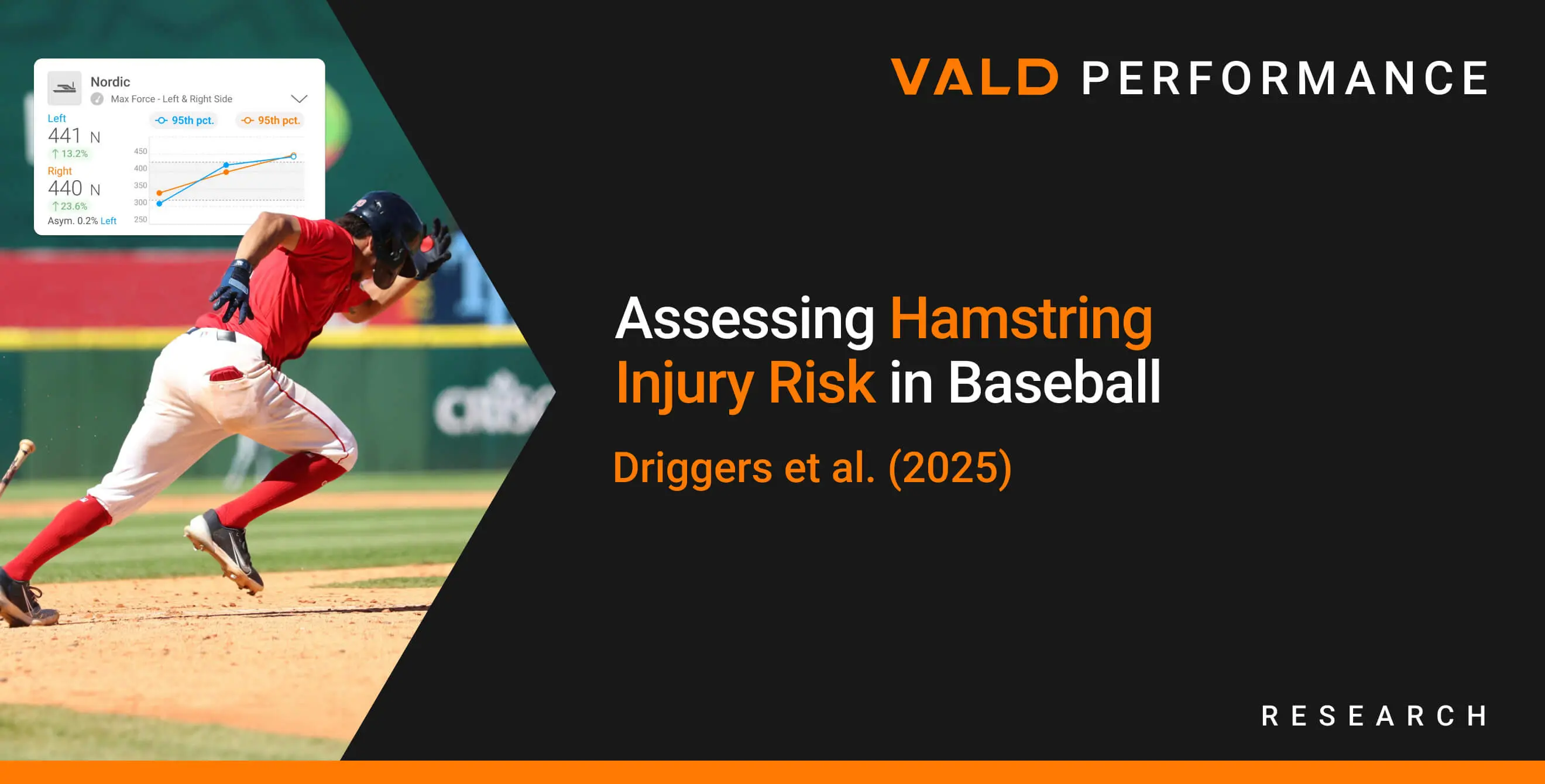Assessing Hamstring Injury Risk in Baseball
Available in:
EN
Study Information
Driggers, A. R., Fry, A. C., Chochrane-Snyman, K. C., Wagle, J. P., & McBride, J. M. (2025). Effectiveness of single leg isometric bridge and Nordic hamstring exercise testing for prediction of hamstring injury risk in professional baseball players. The American Journal of Sports Medicine, 53(12), 2924–2932.
https://doi.org/10.1177/03635465251371789
Purpose of the Study
This study evaluated whether preseason hamstring strength and interlimb asymmetry, measured using a modified single leg isometric bridge test (SLIBT) versus a Nordic hamstring exercise (NHE), were associated with hamstring strain injury (HSI) in professional baseball players. A secondary aim was to determine whether hamstring strength and interlimb asymmetry measures obtained from the SLIBT were correlated with corresponding values from the NHE.
Methods
This prospective cohort study was conducted over three competitive seasons (2019, 2021 and 2022) and involved 465 professional baseball players from eight teams within a single Major League Baseball (MLB) organization. In total, 751 player-seasons were analyzed. As part of routine athlete monitoring, players underwent preseason hamstring strength testing using two protocols:
- Modified SLIBT: Isometric peak force was measured on ForceDecks, using a 20° knee angle and a 100kg barbell to secure the hips.
- NHE: Eccentric peak force was measured on NordBord, with bilateral lowering performed at the slowest possible speed.
This modified version of the SLIBT was adapted from McCall et al. (2015) to enhance biceps femoris activation and standardize setup.
New HSIs were recorded by medical staff and linked to preseason strength data. Independent-sample t-tests, logistic regression and relative risk (RR) calculations were used to assess the relationship between test outcomes and subsequent HSI.
Key Findings
- Injury Incidence: A total of 38 new HSI events were recorded among 36 players over 751 player-seasons.
- Lower Strength in Injured Players: Players who later sustained HSIs demonstrated significantly lower hamstring strength compared with uninjured players (SLIBT: 365N vs. 391N; NHE: 404N vs. 441N).
- NHE Strength Threshold Linked to Injury Risk: Players with NHE peak force <377N had a 2.5x higher risk of sustaining an HSI.
- Increased Strength Associated with Lower Risk: Logistic regression showed that for every 10N increase in hamstring strength, HSI risk decreased by 6.2% (NHE) and 7.4% (SLIBT).
- Limited Predictive Accuracy: Area under the (receiver operating characteristic) curve ranged from 0.523 to 0.619, suggesting limited predictive accuracy. While statistically significant, the tests alone may not be sufficient to distinguish between players who did and did not sustain HSIs.
- Asymmetry Not Predictive of Injury: Interlimb asymmetry in SLIBT and NHE was not predictive of future HSI.
- Low Agreement Between Tests: Moderate correlations were observed between SLIBT and NHE for absolute and relative strength (r = 0.33-0.39), but not for asymmetry values.
VALD’s Solution
The findings highlight the clinical and performance relevance of VALD devices in identifying players at higher injury risk. The study supports ForceDecks and NordBord as ideal tools for preseason hamstring strength screening in elite athletes. It also emphasizes the complementary value of using multiple VALD systems to capture different aspects of hamstring function.
If you would like to learn how VALD’s ForceDecks and NordBord systems can support hamstring injury prevention, assess hamstring strength and monitor asymmetry, download our Practitioner’s Guide to Hamstrings or get in touch with our team.
References
- McCall, A., Nedelec, M., Carling, C., Le Gall, F., Berthoin, S., & Dupont, G. (2015). Reliability and sensitivity of a simple isometric posterior lower limb muscle test in professional football players. Journal of Sports Sciences, 33(12), 1298–1304. https://doi.org/10.1080/02640414.2015.1022579
